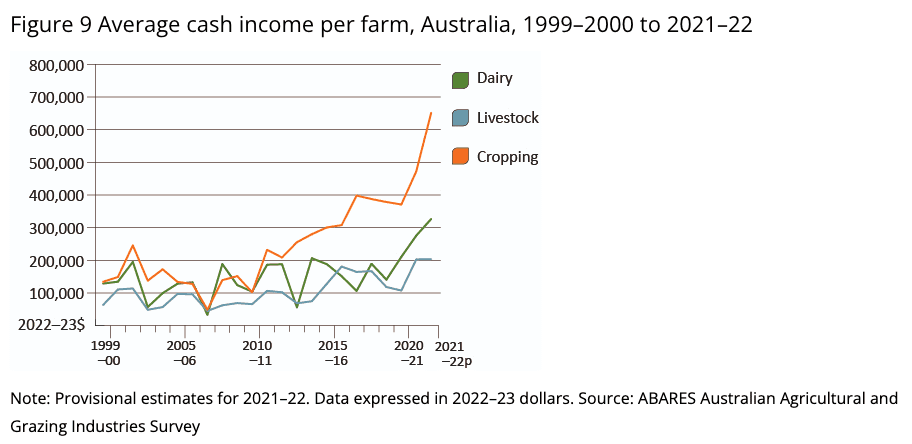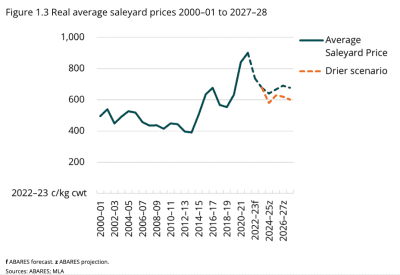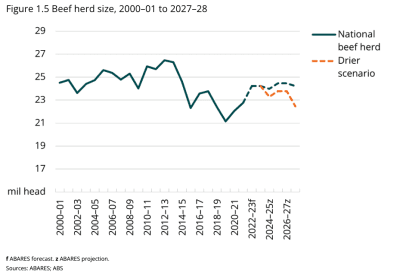A third consecutive year of high rainfall and high commodity prices has been reflected in ABARES’ annual round of agricultural sector updates and forecasts released in Canberra this morning.
Overall the gross value of production for agriculture, fisheries and forestry for 2022-23 is expected to reach $96 billion this financial year (2022-23).
Of that total, exports account for an estimated $75 billion worth, or 78 percent.
A record 67.2 million tonne winter crop helped to drive that growth, while high values of livestock production also contributed.
Headline numbers announced at today’s ABARES conference included:
Average saleyard cattle prices in Australia are forecast to ease by 3 percent to 708c/kg in 2023-24.
The Australian beef herd is forecast to increase by 9 percent in 2022-23 to 24 million head, and to remain steady at that level through 2023-24.
The gross value of beef production is forecast to fall by 10pc to $14 billion in 2022-23.
The value of beef exports is forecast to fall slightly to $9.8 billion in 2022-23.
Live cattle exports are forecast to slightly increase to $1.3 billion in 2022-23.
World beef supply is expected to fall in 2023–24, with the United States undergoing significant destocking due to prolonged and widespread drought.
Demand from Australia’s major export destinations is forecast to increase in 2023-24, with the Chinese, US, Japanese and Korean economies forecast for growth.
In 2021-22 there were 87,800 agricultural businesses in Australia with an estimated value of agricultural operations greater than $40,000.
That compares to a total of 120,000 agricultural businesses with an EVAO of more than $10,000 in Australia in 1980-81.
ABARES notes that meat processors have an “opportunity to capture significant value” through the outlook period to 2027-28, with larger numbers of cattle expected to be available at lower prices.
“The amount of value the sector can capture will depend on how efficiently it can process animals, and if it can continue the productivity trends it has achieved over the last 20 years. Lessons from COVID–19 related disruptions to processing and recruitment will no doubt help the industry going forward.”
It also points to feed availability presenting a challenge for the feedlot sector in drier conditions.
“During 2019–20, the low availability of cheap grains in Australia raised concerns that there was insufficient feed available for the feedlot sector. Should the feedlot sector grow significantly through the outlook period, and the drier scenario be realised, additional pressure may be placed on grain supplies.”
For more details on the 2023-23 ABARES Outlook forecasts released today, click here



